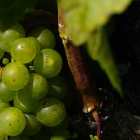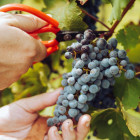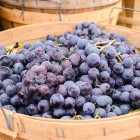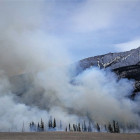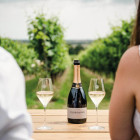The First Growth chateau releases a special label celebrating its 150 year anniversary
Undoubtedly, Lafite Rothschild is one of the world’s most well-known fine wine names.
Being the first of the Grand Cru Classe of the 1855 Classification, the chateau has been living up to its name by producing great wines with exceptional consistency. The average score of the last 20 vintages on Global Wine Score, a database that aggregates scores given by reputable critics, is a stellar 95.8 points.
Lafite has never been the boldest or the richest among top Bordeaux wines. What makes it the first of the First Growths and one of the most beloved wines around the world with its refined, subtle and poised style with an emphasis on balance and elegance.
Fame seems to be embedded in Lafite’s DNA long before the estate took on the Rothschild name. Prior to Baron James de Rothschild acquiring the estate in 1868, Lafite was already highly coveted among connoisseurs. Enjoyed as “the king’s wine” in Versailles, Lafite had a strong following among historic figures including Thomas Jefferson and Robert Warlpole, who bought Lafite in barrels.
Great terroir is a must for any wine to have a chance to be outstanding. In Lafite’s case, most of the fruits that go into the grand vin are produced in one of the highest and sunniest spots in Pauillac.
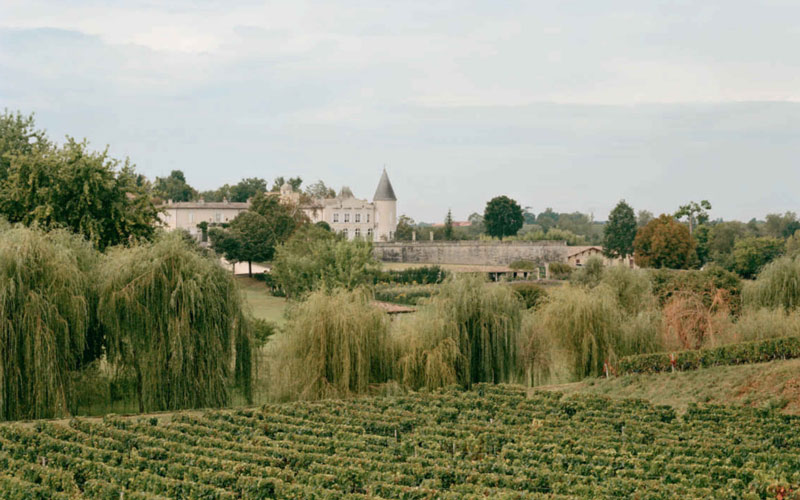
Photo Credit: Thibaut Cuisset - 2016 Views of Lafite
Gravels and sand make up the majority of the vineyard’s soil, providing good drainage and heat retention for sustained growth. The best plots of this plateau benefit from a limestone subsoil, which explains the nuance and finesse of its grand vin. The microclimate of Lafite gives vines an edge in ripening -- on average 10-12 days earlier than nearby estates.
On top of the optimal site and soil, Lafite is blessed with the tried-and-true viticultural practices that were passed down through generations. Vine density has been deliberately kept well below the industry standard and regional average at around 8,000 vines per hectare. Old vines are carefully nurtured and can live over 90 years, yielding some of the most concentrated fruits in Medoc.
More importantly, Lafite values the connection between the carers and vines. The same skilled workers are assigned to the same plots year in and year out, building a deep understanding of the vines that they work on a daily basis to nurture.
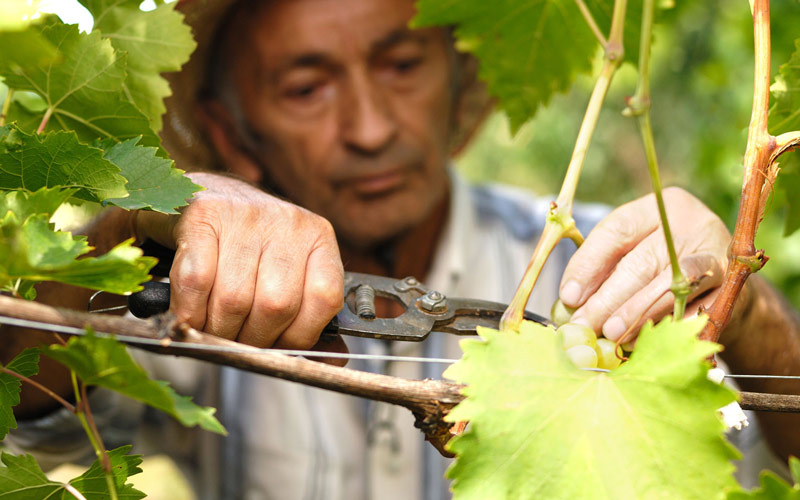
Photo Credit: Mikhailov Studio - Shutterstock
The same respect to individual plots of vines is applied throughout the winemaking process. The expert winemaking team at Lafite vinifies as many lots as possible, fermenting with a combination of traditional oak barrels as well as modern vats made of stainless steel and cement.
The wine then undergoes 20 months of aging in new French oak barriques, made in Lafite’s own cooperage to accentuate the characters of the vintage. With interventions like batongage kept to a minimum, from the second year barrels are moved to the grand roundhouse cellar designed by the famous architect Richardo Bofill.
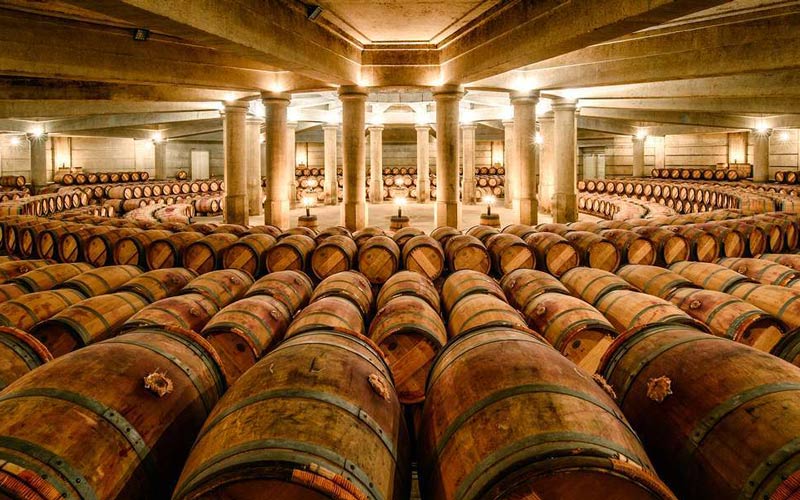
The blends of Lafite vary between vintages with around 90% Cabernet Sauvignon and the rest being mostly Merlot and a touch of Petit Verdot for structure and alluring nose.
Generations of winemakers in Lafite have chosen to emphasise precision, elegance and concentration, expressing more of the climate and terroir with less intervention.
The current technical director Eric Kohler sees his role as the guardian of the chateau’s style while adapting to the challenges of the increasingly extreme and unpredictable weather. As a result, whilst across Bordeaux fine wine has seen a rise in alcohol level, sometimes to over 14% abv, Lafite has retained its sophistication and airiness with the latest 2018 vintage 13.3% abv.
While paying utmost respect to its heritage, Lafite is not afraid of change.
In 2018, the chateau’s 150 year anniversary, Saskia de Rothschild officially took over the mantle of leading Lafite. This makes her the second woman to head this centenary estate and one of the very few female owners of the First Growths.
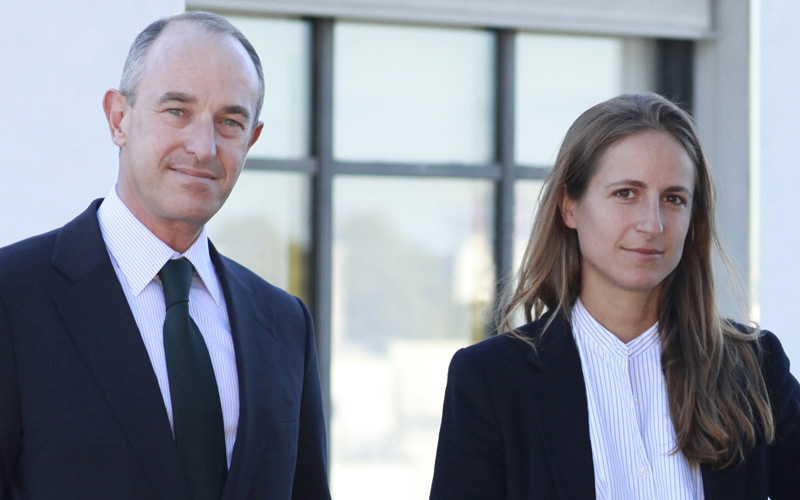
Together with her newly appointed CEO Jean-Guilaume Prats, a veteran manager of wine brands at LVMH, Saskia seeks to “steadily stand the test of time as we head towards the future” while further cementing Lafite’s image as one of the most prestigious wines in the world.
The 2018 vintage, the year Saskia became Lafite’s chairwoman, happens to be an exceptional vintage in Bordeaux with critics expecting it to become a modern classic. Giving Lafite 2018 a nearly perfect score of 98-100 points, Robert Parker’s successor Lisa Perroti-Brown MW calls this vintage a “benchmark”: “If this wine doesn’t get Bordeaux Lovers hearts’ racing, nothing will.”
To celebrate the great vintage and the monumental 150 year anniversary of the chateau, Lafite has given this wine a new unique label.
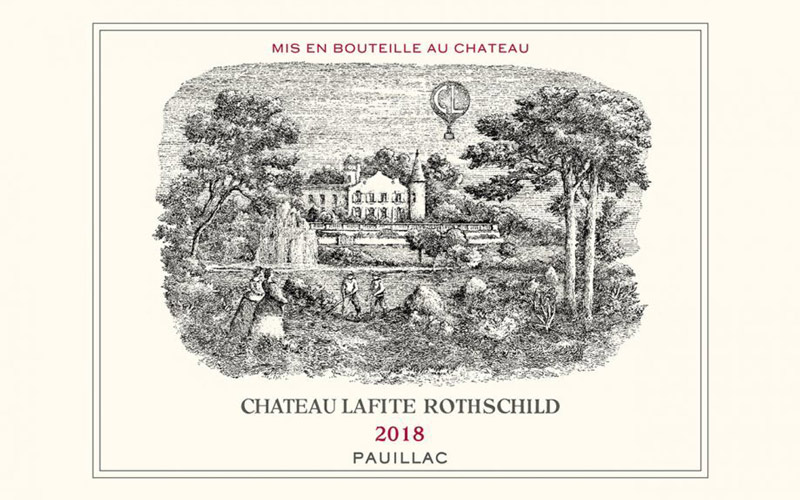
A hot air balloon has been added to the landscape of the estate, with two women in the foreground taking a moment and admiring the balloon.
“In 1868, hot air balloons were the absolute symbol of modernity and adventure,” Saskia explains the meaning behind this unusual feature, “In 2018, we still see them fly but they have become the symbol of slowing down, of taking the time to move more steadily. With no rush. Just what we have been doing at Lafite for 150 years”.
In addition to the special label, Lafite will also release 300 limited edition cases containing a magnum of the 2018 vintage and a book titled the Almanac, which details the last 150 vintages of Lafite Rothschild and their historical context.
To drinkers and collectors, special editions such as Lafite 2018 inspire passion. They are more likely to pay extra for these wines to complete their collection, celebrate a special occasion and such.
The 2000 vintage of Mouton Rothschild was given a complete new look to mark the arrival of the new millennium. Despite its high release price, it remains one of the sought-after vintages of Mouton with fetching over four times the price of the 1999 and 2001 vintages.
A more recent example of special edition bottles would be Angelus 2012. The bold and luxurious design commemorates Angelus receiving Premier Grand Cru Classe A classification during the same year. It stands out among the last 10 vintages as the least available and most expensive wine.
There is no doubt that Lafite 2018 will receive a similar level of enthusiasm like Angelus 2012 and Mouton 2000 have. As Lafite tends to be accessible more rapidly than other First Growths and has a strong following in Asia, the 2018 vintage will surely be harder and pricier to source.
For those who have the foresight to have already added Lafite 2018 to their collection and the strong mind to resist opening the wine too soon, the reward will be spectacular.
60 years after bottled, Lafite 1959 still managed to blow away the minds of the world’s best wine tasters and writers at a recent tasting. Who knows what the future holds for the nearly perfect and effortlessly elegant 2018 vintage?
Perhaps the only way to find out is to taste Lafite 2018 yourself in 50-year time, when the chateau turns 200 years old and space cruising replaces air balloons as a way to live in the moment!

